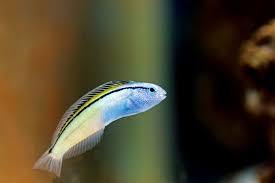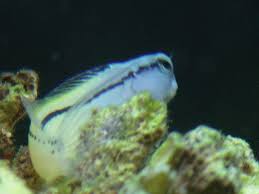
The Pompadour rose, renowned for its timeless beauty and delicate fragrance, is facing unprecedented challenges due to the pervasive effects of environmental pollution. As pollutants infiltrate the air, water, and soil, Pompadour roses are subjected to a barrage of stressors that disrupt their growth, development, and overall well-being. Understanding the transformation of Pompadour roses under the influence of environmental pollution is essential for mitigating the impacts and safeguarding these iconic blooms for future generations.
**1. Air Pollution**
Air pollution, resulting from industrial emissions, vehicle exhaust, and agricultural activities, poses a significant threat to Pompadour roses and other plants. Pollutants such as nitrogen oxides, sulfur dioxide, ozone, and particulate matter can damage plant tissues, inhibit photosynthesis, and impair respiratory function in Pompadour roses. Additionally, air pollution can alter the composition of atmospheric gases, leading to changes in temperature, humidity, and precipitation patterns that further stress Pompadour roses and disrupt their growth cycles.
**2. Water Pollution**
Water pollution, stemming from urban runoff, industrial discharges, and agricultural runoff, contaminates water sources and threatens the health of Pompadour roses and aquatic ecosystems. Pollutants such as heavy metals, pesticides, herbicides, and pharmaceuticals can accumulate in the soil and water, affecting nutrient uptake, root development, and flowering in Pompadour roses. Additionally, water pollution can lead to soil erosion, sedimentation, and nutrient imbalances that compromise the stability and fertility of the growing environment for Pompadour roses.
**3. Soil Pollution**
Soil pollution, resulting from improper waste disposal, industrial activities, and agricultural practices, degrades soil quality and undermines the health of Pompadour roses and soil-based organisms. Pollutants such as heavy metals, petroleum hydrocarbons, pesticides, and fertilizers can accumulate in the soil, contaminating the root zone and inhibiting root growth, nutrient absorption, and water uptake in Pompadour roses. Additionally, soil pollution can disrupt soil microbial communities, impairing nutrient cycling, organic matter decomposition, and soil structure maintenance essential for Pompadour rose health and vitality.
**4. Climate Change**
Climate change, driven by greenhouse gas emissions and deforestation, exacerbates environmental pollution and poses additional challenges to Pompadour roses and ecosystems worldwide. Rising temperatures, altered precipitation patterns, and extreme weather events associated with climate change can disrupt Pompadour rose growth cycles, flowering times, and pest and disease dynamics. Additionally, climate change can exacerbate water scarcity, soil erosion, and habitat loss, further stressing Pompadour roses and exacerbating their vulnerability to environmental pollution.
**5. Impact on Growth and Flowering**
The transformation of Pompadour roses under the influence of environmental pollution manifests in various ways, including stunted growth, reduced flowering, and diminished overall health and vigor. Pollution-induced stressors disrupt physiological processes in Pompadour roses, impairing nutrient uptake, photosynthesis, and water regulation essential for growth and development. As a result, Pompadour roses may exhibit symptoms such as yellowing leaves, leaf necrosis, leaf curling, and poor flower quality, detracting from their beauty and fragrance.
**6. Adaptation and Resilience**
Despite the challenges posed by environmental pollution, Pompadour roses demonstrate remarkable resilience and adaptability in the face of adversity. Through mechanisms such as antioxidant production, stress hormone regulation, and root system expansion, Pompadour roses can mitigate the impacts of pollution and maintain their vitality in polluted environments. Additionally, breeding programs and genetic selection efforts aim to develop Pompadour rose varieties with enhanced tolerance to environmental stressors, ensuring their continued survival and success in polluted landscapes.
**7. Mitigation Strategies**
To mitigate the impacts of environmental pollution on Pompadour roses, proactive measures and conservation efforts are essential. Implementing sustainable land management practices, such as reducing chemical inputs, enhancing soil fertility, and promoting biodiversity, can improve growing conditions for Pompadour roses and minimize pollution-related stressors. Additionally, advocating for policies and regulations that limit emissions, reduce waste, and protect natural habitats can safeguard Pompadour roses and ecosystems from further degradation.
**Conclusion**
In conclusion, the transformation of Pompadour roses under the influence of environmental pollution underscores the urgent need for conservation and sustainable practices to protect these iconic blooms and the ecosystems they inhabit. By addressing the root causes of pollution, promoting biodiversity conservation, and fostering resilience in Pompadour roses, we can mitigate the impacts of environmental degradation and ensure the continued beauty and vitality of these cherished flowers for generations to come. Through collective action and stewardship, we can preserve the legacy of Pompadour roses and safeguard their place in our natural and cultural heritage.
**Adaptation Strategies and Future Prospects**
Continuing from the discussion on the transformation of Pompadour roses under the influence of environmental pollution, let’s explore adaptation strategies and future prospects for mitigating the impacts and ensuring the resilience of these iconic blooms:
**8. Genetic Diversity and Breeding Programs**
Preserving genetic diversity is crucial for enhancing the resilience of Pompadour roses to environmental stressors. Breeding programs focused on selecting for traits such as pollutant tolerance, disease resistance, and climate resilience can yield new varieties of Pompadour roses better suited to thrive in polluted environments. By harnessing the genetic diversity inherent in Pompadour roses and related species, breeders can develop cultivars that exhibit enhanced tolerance to air, water, and soil pollutants, ensuring their continued success in urban and industrial landscapes.
**9. Soil Remediation and Restoration**
Remediating polluted soils is essential for restoring the health and fertility of the growing environment for Pompadour roses. Soil remediation techniques such as phytoremediation, bioaugmentation, and composting can help mitigate the impacts of soil pollution on Pompadour roses and promote soil regeneration and ecosystem recovery. Phytoremediation, in particular, involves using plants such as Pompadour roses to absorb, metabolize, or sequester pollutants from the soil, thereby detoxifying the environment and improving growing conditions for other plants and organisms.
**10. Urban Greening and Green Infrastructure**
Investing in urban greening initiatives and green infrastructure projects can mitigate the impacts of environmental pollution on Pompadour roses and urban ecosystems. Planting Pompadour roses and other resilient plant species in urban parks, green spaces, and street medians helps improve air quality, reduce heat island effects, and enhance biodiversity in cities. Additionally, integrating green infrastructure elements such as green roofs, rain gardens, and permeable pavements into urban landscapes can capture and filter pollutants, mitigate stormwater runoff, and create habitat corridors for wildlife, benefiting Pompadour roses and communities alike.
**11. Community Engagement and Advocacy**
Engaging local communities in environmental stewardship and advocacy efforts is essential for raising awareness of the impacts of pollution on Pompadour roses and ecosystems. Community-led initiatives such as tree planting events, neighborhood clean-up campaigns, and educational workshops empower individuals to take action to protect Pompadour roses and promote environmental sustainability in their communities. By fostering a sense of ownership and responsibility for the environment, communities can work together to address pollution sources, advocate for policy changes, and implement solutions that benefit Pompadour roses and the natural world.
**12. Sustainable Agriculture Practices**
Promoting sustainable agriculture practices is essential for reducing pollution from agricultural sources and safeguarding Pompadour roses and surrounding ecosystems. Organic farming methods, agroecological approaches, and integrated pest management techniques minimize the use of synthetic fertilizers, pesticides, and herbicides, reducing pollution runoff and protecting soil and water quality. By adopting regenerative agricultural practices that prioritize soil health, biodiversity conservation, and ecosystem resilience, farmers can create healthier growing environments for Pompadour roses and promote sustainable food production systems that benefit people and the planet.
**13. Global Collaboration and Policy Action**
Addressing the complex challenges of environmental pollution requires global collaboration and concerted policy action at local, national, and international levels. International agreements such as the Paris Agreement and the Convention on Biological Diversity provide frameworks for coordinating efforts to mitigate climate change, protect biodiversity, and reduce pollution impacts on Pompadour roses and ecosystems worldwide. By working together to implement pollution control measures, enforce environmental regulations, and invest in sustainable development initiatives, governments, businesses, and civil society can create a cleaner, healthier, and more resilient world for Pompadour roses and future generations.
**Conclusion**
In conclusion, the transformation of Pompadour roses under the influence of environmental pollution highlights the urgent need for adaptation strategies and collaborative action to mitigate the impacts and ensure the resilience of these beloved blooms. By harnessing the power of genetic diversity, implementing soil remediation and restoration efforts, promoting urban greening initiatives, engaging communities in environmental stewardship, adopting sustainable agriculture practices, and advocating for policy action, we can protect Pompadour roses and their ecosystems from the harmful effects of pollution. Through collective efforts and shared commitment to environmental sustainability, we can create a brighter future where Pompadour roses continue to thrive and inspire beauty and wonder in the natural world.










